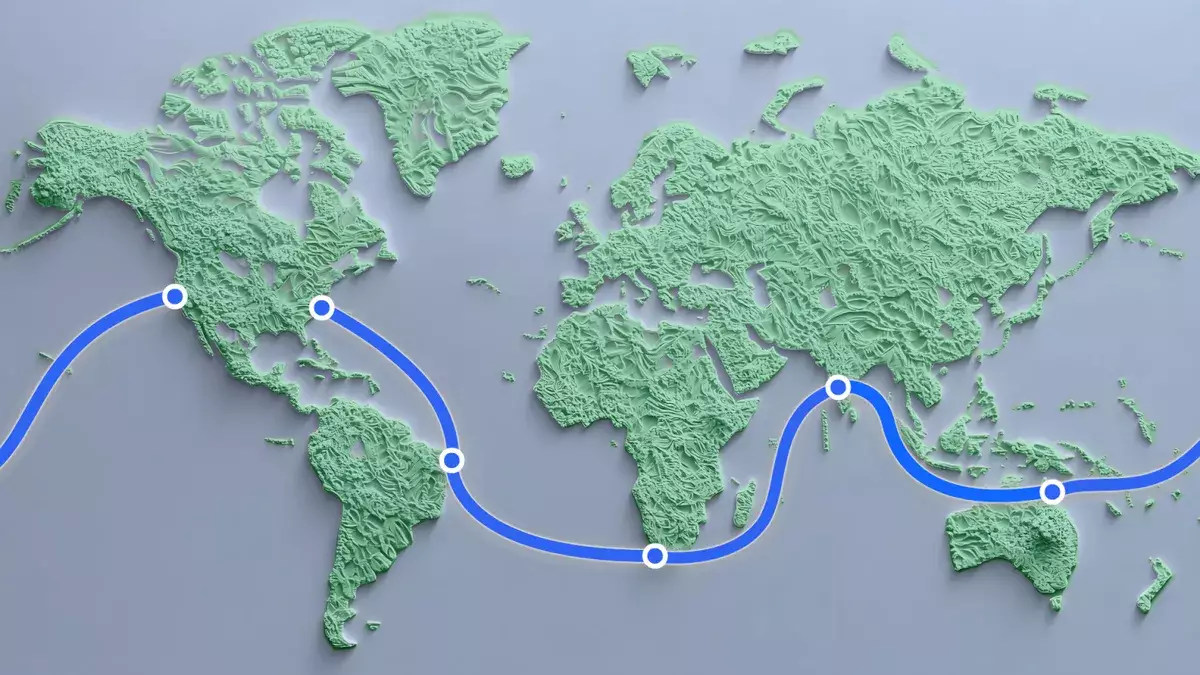The digital landscape of 2025 presents a remarkable paradox: while technological advancements promise wireless connectivity, the underlying infrastructure still relies heavily on physical cables. It is startling to realize that up to 98% of global internet traffic traverses long, underwater cables. In this context, Meta’s Project Waterworth emerges as an ambitious endeavor, aimed at reshaping the framework of international communication by laying an unprecedented internet cable that sprawls across oceans and continents.
Project Waterworth aims to establish an expansive network of connectivity, stretching over 31,000 miles (around 50,000 kilometers)—that’s longer than the Earth’s circumference, which is just under 25,000 miles. This monumental cable will connect key global nodes including the United States, India, South Africa, Brazil, and beyond. The idea of submerging such a lengthy cable into the ocean might initially seem impractical, but it reflects the strategic planning necessary for efficient communication in a digitally dependent world.
The planned route of the cable takes it from the eastern shores of the United States, down to Brazil before looping across the Atlantic. It then navigates around the southern tip of Africa, heads towards Mumbai, India, and continues to Queensland, Australia, before making its return journey to California. Such a complex route highlights the sophisticated engineering efforts involved in maintaining connectivity across diverse geographic and oceanographic challenges.
Meta’s approach to constructing this cable is characterized by cutting-edge engineering techniques designed for resilience and efficiency. The company has announced plans to lay the cable as deep as four miles (approximately seven kilometers) beneath the ocean’s surface, a move intended to fortify it against environmental hazards.
By employing advanced burial techniques, the cable is expected to mitigate risks from threats such as ship anchors and seismic activity. Moreover, the cable is designed with 24 fiber pairs—signifying an innovative capacity to facilitate high-speed data transmission essential for accommodating the burgeoning demands of artificial intelligence and other futuristic technologies. Not only does this project advocate for robust infrastructure, but it also speaks to the relentless quest for speed and reliability that defines modern networking.
While Project Waterworth showcases Meta’s ambition to contribute to global communications infrastructure, it contrasts sharply with the controversy surrounding the company’s public relations choices. Recently, CEO Mark Zuckerberg shifted the company’s stance on content moderation, preferring “community notes” over traditional fact-checking methods. This decision underscores ongoing scrutiny regarding the platform’s role in fostering misinformation.
Despite such criticisms, the development of this international internet cable reminds us that Meta is engaging in significant projects capable of determining the future framework of global connectivity. Rather than being merely an entity engaged in social media discourse, Meta’s investments in physical infrastructure illustrate a commitment to enhancing the technology that drives our everyday lives.
The establishment of Project Waterworth has far-reaching implications beyond mere connectivity. As the cable traverses key global regions, it suggests a strengthening of economic ties and a better capacity for information exchange. Enhanced connectivity can lead to innovations that facilitate global commerce and improve access to digital resources in developing regions. However, this access comes with its complexities; the equitable distribution of technology and the associated benefits must remain a priority.
While Meta’s involvement in such projects yields tangible advancements, it poses critical questions regarding corporate responsibility. As the digital realm expands, the obligation to ensure that innovations do not deepen the digital divide remains paramount. Thus, even as companies forge ahead with ambitious infrastructure projects, the societal impacts and ethical considerations should never be neglected.
Meta’s Project Waterworth exemplifies a noteworthy shift in the approach to global digital infrastructure. By investing in physical cables that underpin the internet’s fiber, the company is poised to bolster connectivity and enhance technological advancements. Yet, as this venture unfolds, the need for vigilance and responsible stewardship in the digital landscape remains ever-urgent.

